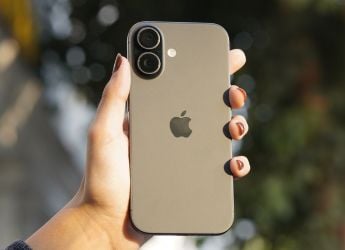- Home
- Science
- Science News
- Scientists Develop Self Healing Stretchable Lithium Batteries With Enhanced Durability
Scientists Develop Self-Healing Stretchable Lithium Batteries With Enhanced Durability
An expert team of scientists at the University of California have designed a stretchable lithium battery with self-healing properties.

Photo Credit: Freepik/macrovector
The battery uses a zwitterionic polymer with dual charges
Over the years, scientists have been developing batteries that last longer and are adjustable to different temperatures. However, this time, the innovation has taken to another level. Lithium-ion batteries are commonly used to provide power for smartphones and cars. Although these batteries are covered with a robust layer to prevent potential stress from air intake, they are not ideal for soft robots or wearables. Recently, a team of scientists at the University of California, Berkeley, has built a non-toxic flexible battery that is super-stretchable and survives twisting or even stabbing.
About Self-Healing Lithium Battery
This self-healing stretchable battery has been developed by a multidisciplinary team at the University of California, Berkeley, Georgia Institute of Technology, and the Hong Kong University of Science and Technology. According to their published paper in the Journal Science Advances, this group of scientists has proved that the stretchable lithium battery remained stable after undergoing 500 charge/discharge cycles. The properties of this battery are highly advanced, as it heals itself, and the jelly-like structure makes it flexible to use.
The Process
The development of this new battery was enforced by using a zwitterionic polymer that comprised both a positive and a negative charge. Such polymers bond with water molecules with a charged part, while the negative charge attracts the lithium ions. This arrangement lets the water be bound tightly within the battery, further limiting the risk of splitting and releasing lithium ions when the voltage is applied. Furthermore, the scientists added acrylic acid, followed by a fluorine-free Li salt-based hydrogel electrolyte (stability window up to 3.11 volts) as a cross-linker.
The Results
As a result of the above-exemplified process, the battery was 19 percent water and exhibited stability with 50% humidity. The expert team of scientists then assessed its functioning by attaching it to a circuit board running LED lights. As a result, the battery performed well for over a month, and very little water splitting was witnessed. Post that, the battery continued to work even after suffering stretches, punctures, needles, razors, and folds.
This expert team of scientists from the University of California, Berkeley, has proved that innovation knows no limit. These batteries will work wonders in soft robots and wearables. Surviving the damages and the presence of non-toxic components is what makes it outshine as compared to other lithium batteries.
Get your daily dose of tech news, reviews, and insights, in under 80 characters on Gadgets 360 Turbo. Connect with fellow tech lovers on our Forum. Follow us on X, Facebook, WhatsApp, Threads and Google News for instant updates. Catch all the action on our YouTube channel.
Related Stories
- Samsung Galaxy Unpacked 2025
- ChatGPT
- Redmi Note 14 Pro+
- iPhone 16
- Apple Vision Pro
- Oneplus 12
- OnePlus Nord CE 3 Lite 5G
- iPhone 13
- Xiaomi 14 Pro
- Oppo Find N3
- Tecno Spark Go (2023)
- Realme V30
- Best Phones Under 25000
- Samsung Galaxy S24 Series
- Cryptocurrency
- iQoo 12
- Samsung Galaxy S24 Ultra
- Giottus
- Samsung Galaxy Z Flip 5
- Apple 'Scary Fast'
- Housefull 5
- GoPro Hero 12 Black Review
- Invincible Season 2
- JioGlass
- HD Ready TV
- Laptop Under 50000
- Smartwatch Under 10000
- Latest Mobile Phones
- Compare Phones
- Honor Win RT
- Honor Win
- Xiaomi 17 Ultra Leica Edition
- Xiaomi 17 Ultra
- Huawei Nova 15
- Huawei Nova 15 Pro
- Huawei Nova 15 Ultra
- OnePlus 15R
- Asus ProArt P16
- MacBook Pro 14-inch (M5, 2025)
- OPPO Pad Air 5
- Huawei MatePad 11.5 (2026)
- Xiaomi Watch 5
- Huawei Watch 10th Anniversary Edition
- Acerpure Nitro Z Series 100-inch QLED TV
- Samsung 43 Inch LED Ultra HD (4K) Smart TV (UA43UE81AFULXL)
- Asus ROG Ally
- Nintendo Switch Lite
- Haier 1.6 Ton 5 Star Inverter Split AC (HSU19G-MZAID5BN-INV)
- Haier 1.6 Ton 5 Star Inverter Split AC (HSU19G-MZAIM5BN-INV)

















